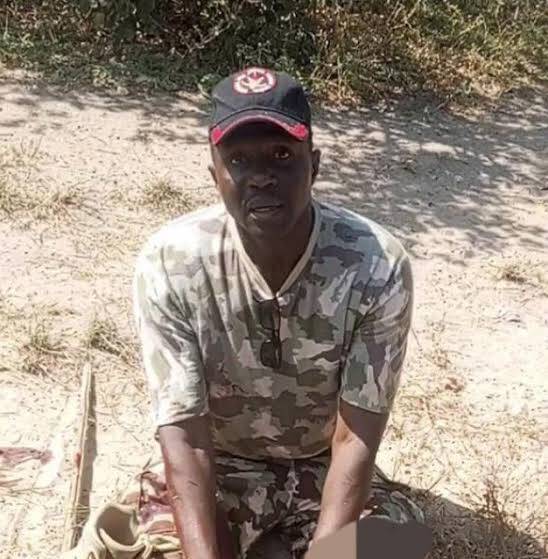
Reported by: L . Imafidon | Edited by: Henry Owen
The controversy surrounding the fate of Brigadier-General M. Uba has become one of the most emotionally charged and credibility-testing moments for Nigeria’s security narrative in recent years. It did not only involve the possible loss of a senior military officer but also raised deep concerns about public trust, communication transparency, military morale, and the state’s obligation to inform and protect its citizens with accurate, timely, and reliable information.
The incident began after troops travelling along the Damboa–Biu highway, near Wajiroko in Borno State, were reportedly ambushed while returning from counter-terrorism operations around the Sambisa forest region — an area long recognized as a volatile corridor used by insurgents for movement, staging attacks, and hiding captives. Brigadier-General Uba, who was then the Commander of the 25 Task Force Brigade, was at the centre of this mission, making his presence strategically and symbolically significant due to his rank, operational experience, and leadership influence in the north-east theatre.
When news of the ambush first leaked, several unofficial sources reported that the Brigadier-General had not only been attacked but abducted — a development that, if confirmed, would have had severe operational and psychological implications. However, the Nigerian Army immediately issued a formal statement denying the abduction, characterising the reports as false and advising the public to ignore what it labelled a dangerous rumour capable of damaging morale. In military communications, such a rapid and absolute denial is unusual, especially when dealing with high-ranking officers, because standard global practice is to avoid categorical statements until confirmation, recovery, or proof-of-life is obtained.
What intensified national concern was the sudden contradiction that emerged days later when insurgent-linked sources released photographs and claims that appeared to show the Brigadier-General in their custody, followed by another image suggesting he had been executed. These images, regardless of whether they originated as propaganda or verified evidence, directly challenged the earlier military statement and created a disturbing narrative gap between official communication and visible claims coming from outside the state. For many Nigerians, this gap felt less like harmless misinformation and more like a breach of trust linked to life-and-death national security facts.
Compounding the matter were subsequent reports that a leadership change occurred within the 25 Task Force Brigade shortly after the incident, which, although not confirmed to be connected, fuelled further speculation. Equally troubling were unverified but widely circulated accounts that the brigadier-general may have shared distress signals and pinpointed his live location shortly before his alleged execution, leading many to question whether communication lines, rescue coordination, air surveillance response, or command approvals may have failed or been delayed.
To understand why Nigerians became emotionally invested, it is important to consider the historical context. Over the years, on multiple occasions news involving missing or killed troops, police officers, pilots, and intelligence operatives has surfaced online before official confirmation, sometimes days or even weeks later. Likewise, there have been cases where families of fallen heroes reportedly found out from social media rather than government channels. This history has created a perception — whether right or wrong — that official communication sometimes prioritises institutional image, public calm, or international perception over full-truth disclosure, especially when outcomes are unfavourable.
Additionally, Nigerians are aware that information warfare is now a central tool used by both states and terrorist organisations, meaning both may choose to shape narratives strategically. Terror groups often exaggerate success to create fear and win psychological ground; governments sometimes withhold sensitive facts to protect operational advantage. However, when visual evidence surfaces that contradicts official positions, the public is left disoriented, unsure who to believe, and emotionally wounded — particularly when the matter involves a respected senior officer whose service represents the sacrifices of thousands of soldiers working under harsh and life-threatening conditions.
The emotional impact of this controversy is not limited to civilians. It reverberates deeply among serving officers, frontline troops, families of military personnel, and veterans, many of whom see leadership protection, rapid rescue response, and truthful communication as critical pillars of trust within the defence community. When information appears inconsistent, it threatens the psychological backbone of the armed forces — belief in the value and honour of each life, regardless of rank.
While the Nigerian Army maintains that it rejects terrorist propaganda and stands by its official communications, the unresolved nature of the Brigadier-General Uba case has prompted a growing call for thorough clarification, after-action review, communication reform, and accountability measures — not necessarily to blame individuals, but to restore public confidence and honour the integrity of those who risk everything to defend the nation.
The lesson from this incident is clear: in modern conflict, truth is a national security asset, and trust is a defence resource as vital as ammunition, intelligence, and equipment. Nigerians are not only mourning what may have happened; they are demanding clarity because clarity is confidence, confidence is unity, and unity is security.
📩 Stone Reporters News | 🌍 stonereportersnews.com
✉️ info@stonereportersnews.com | 📘 Facebook: Stone Reporters | 🐦 X (Twitter): @StoneReportNew | 📸 Instagram: @stonereportersnews


Add comment
Comments